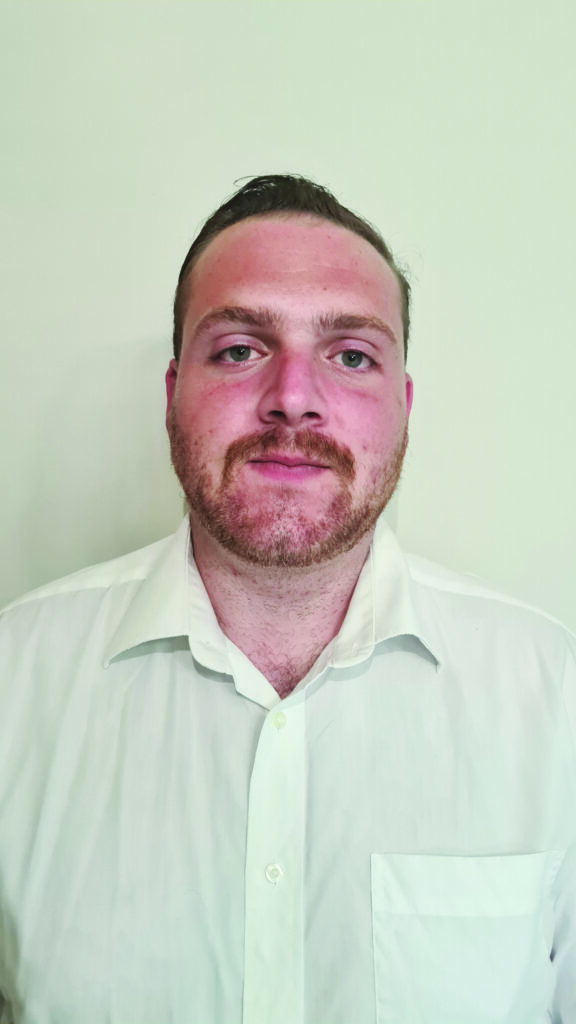Can you imagine using Bluetooth or Wi-Fi more than two kilometres away from the source? RYAN D’AMATO is a Master’s in Microelectronics and Microsystems student whose software-defined radio-frequency transceivers have achieved that and much more. Here, he explains the transceivers’ capabilities and the process he undertook to create them.

In 1895, Italian inventor and electrical engineer Guglielmo Marconi managed to send signals from one end of his house to another through the ether. This wireless technology was so ahead of its time that when he announced his invention, people practically laughed him out of the room. But this technology was here to stay, and it would revolutionise the way we live and communicate.
“As time went by, technological advancement brought with it the need for these wireless communication systems to provide broader ranges and higher data rates,” explains Ryan D’Amato, who works as a research support officer within the Department of Microelectronics and Microsystems at the University of Malta, and is currently reading for a Master’s in the same subject.
“Today, we use this technology in every area of our lives – just think of your mobile phone – but there is one major flaw with it since the hardware is often limited. This forces the researchers working with such tools to continually upgrade or replace them in order to be able to test new protocols, something which is expensive, not environmentally friendly, and may be pretty annoying at times.”
In order to counteract this, researchers developed software-defined radio (SDR), which is essentially a hardware platform that runs on software that allows it to change how it behaves without the need to physically replace any of its parts. This was a ground-breaking move from what had come before, and it inspired Ryan’s master’s dissertation project.
“My initial aim was to construct two radio frequency (RF) transceivers from scratch, which would have included designing the electronic circuits, buying the correct chips, programming them, and so on. Then, I realised that these would quickly become redundant, so I opted to build two SDR-enabled transceivers, which is a technology that’s barely a decade old.”
As Ryan continues to explain, SDR gives the transceivers the capability to connect to various networks, including Wi-Fi 5, Wi-Fi 6, Wi-Fi 6E, GSM, 4G, 5G, and Bluetooth. This will give any electronic equipment to which one of these transceivers is attached the ability to connect to all these networks and communicate with the other transceiver. But that’s just the tip of the iceberg.
“While building these transceivers, I kept in mind the two main things the industry requires from wireless transmission. The first is the data rate, which is how much data can be transferred from one point to another; and the second is the range, which refers to how far that data can go.”
Through Ryan’s transceivers, the data rate is now at 3.84 MB per second, which is more than the latest version of Bluetooth can handle. Yet, as anyone who uses Bluetooth would know, this technology’s range is usually limited to just a few metres. Ryan’s creation, on the other hand, has two outputs: a non-amplified one that can reach up to 20 metres, and a power-amplified one which, with just 0.5 watts, gives you a range of up to two kilometres.
“The data rate is now at 3.84 MB per second, which is more than the latest version of Bluetooth can handle…”
In order to create these devices, Ryan used the latest SDR technology, which works using the Zynq 7000 System on Chip (SoC). This is just like the processor we have in our home computers but, unlike those processors, which work in a sequential manner (that is, one task at a time), this SoC comes with Field Programmable Gate Arrays that give it the ability to work on four or even five tasks simultaneously.
This has resulted in two transceivers that can send and receive signals between 500 MHz and 6 GHz in real-time, with data having less than two milliseconds of delay. This means that audio can be sent uncompressed up to two kilometres away and be played practically instantly on the other connected device.
“My aim was to simply create these transceivers from scratch, but there are so many uses for them. In media applications, for example, they could transmit high-resolution video and audio in real-time. In the future, they could also be used to amplify GPS trackers or be used in radars. Since these were not designed with that in mind, they would need tweaking to achieve that, though…”
Whatever happens next with these RF transceivers, the reality is that they show that inquisitiveness, drive, and the opportunity to experiment can push us to achieve more than we set out to. In fact, from our end, we’re only too happy to support this drive and see our students succeed!

